Manchester isn’t just industrial grit turned hip — it’s a city of stories, voices, and surprising green corners. For travellers with mobility or access needs, it offers a mix of culture, history, and refreshed public spaces. Here’s a deeper look at each recommendation — what makes it special, and how it works for accessibility.
Accessible Attractions
People’s History Museum
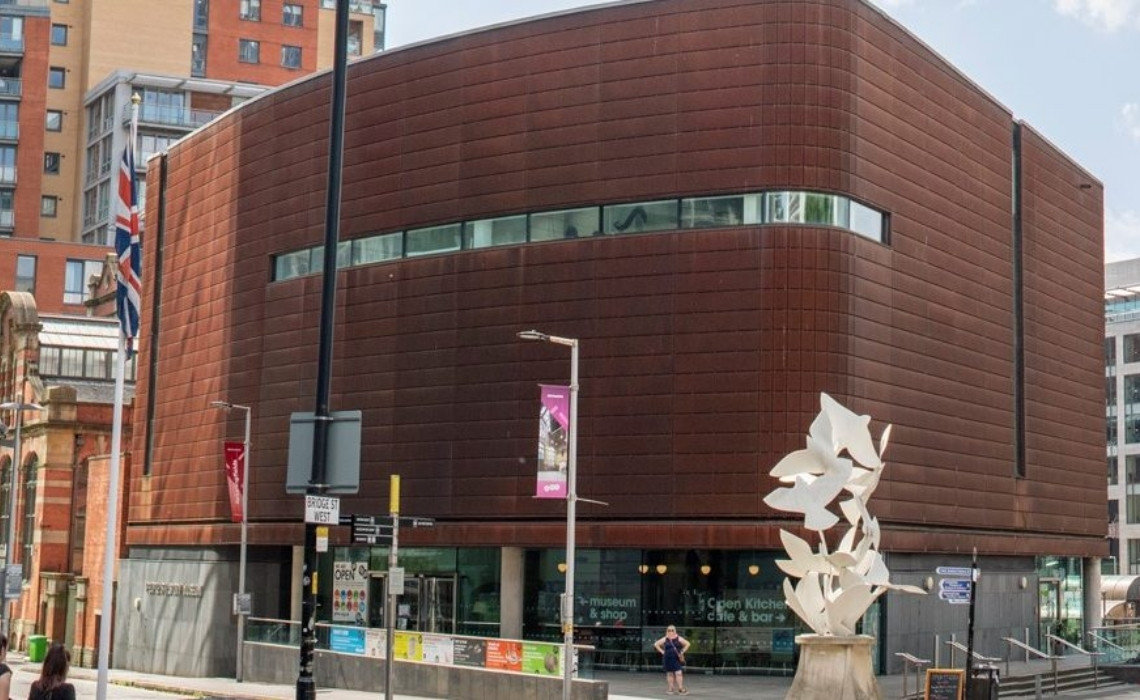
Why visit?
This museum is unique in Britain: it’s devoted to the lives, struggles, and triumphs of ordinary people. You’ll encounter activism, protest banners, labour movements, suffrage, and more. Recent exhibitions include Nothing About Us Without Us, which explores disability rights and autism in social history. Book a tour.
Accessibility highlights:
Ramped entrance and a “slope” approach at the most accessible entrance. Automatic sliding doors. Lift access to all floors (with width/depth suitable for manual wheelchairs; some constraints for large powered chairs). Accessible and Changing Places toilets on the ground floor. Quiet Room available for those needing a sensory break. Sensory tools (fidget toys, etc.) available from Access Stations in galleries. The signage uses high-contrast, large-print text. Staff are open to discussing access needs in advance. In short: it’s one of the more fully accessible museums in Manchester, and deeply rooted in social history, making it both meaningful and manageable.
Castlefield Viaduct – Sky Garden
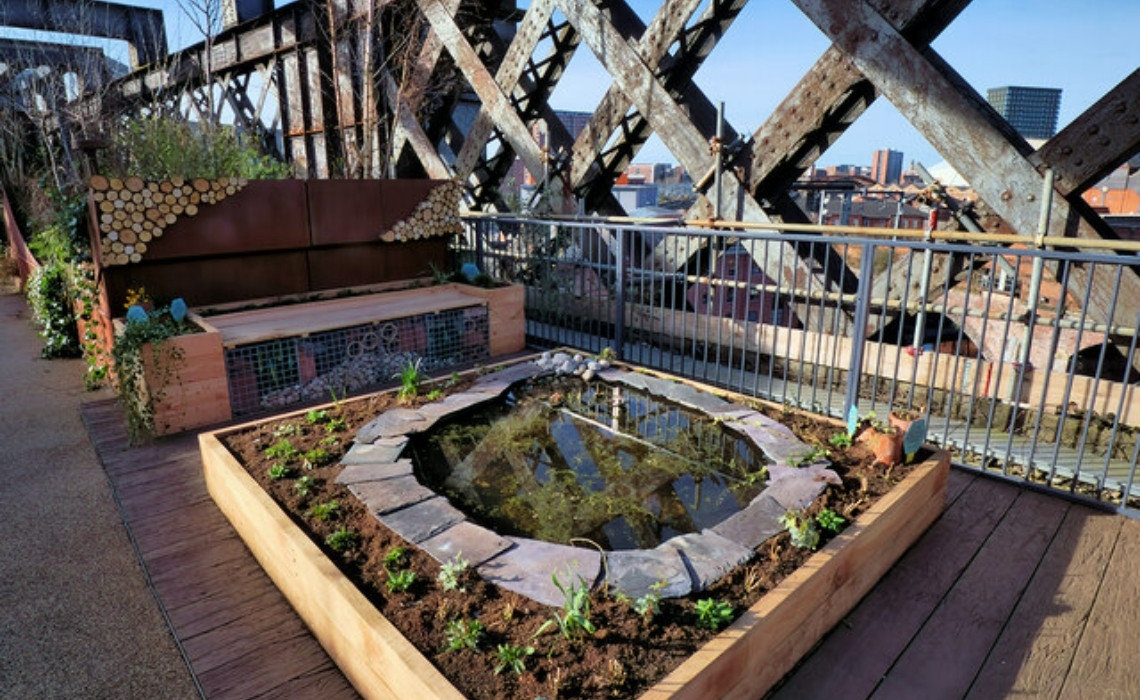
Why visit?
This is Manchester’s elevated garden, repurposing a 19th-century railway viaduct into a sky park in the heart of the city. It offers a peaceful escape, botanical plantings, views, and a touch of industrial heritage. The juxtaposition of steel, planting, and skyline is part of its charm. Read reviews.
Accessibility highlights:
The most accessible entrance is step-free and level. Inside, the majority of the space is step-free. Some slight ramps exist (e.g. to the visitor centre). Accessible toilets with adaptations are available near the entrance. Staff and volunteers are available to assist with navigation. The lift that links to Metrolink platforms has tactile markings, controls at accessible height, and suitable dimensions (110 cm opening, interior 140 × 210 cm) for many wheelchair users. The viaduct’s paths are wide and designed to allow gentle traversal; most of the garden area is accessible. One caveat: there’s a maximum capacity, so on busy days there may be a wait to enter.
Elizabeth Gaskell’s House
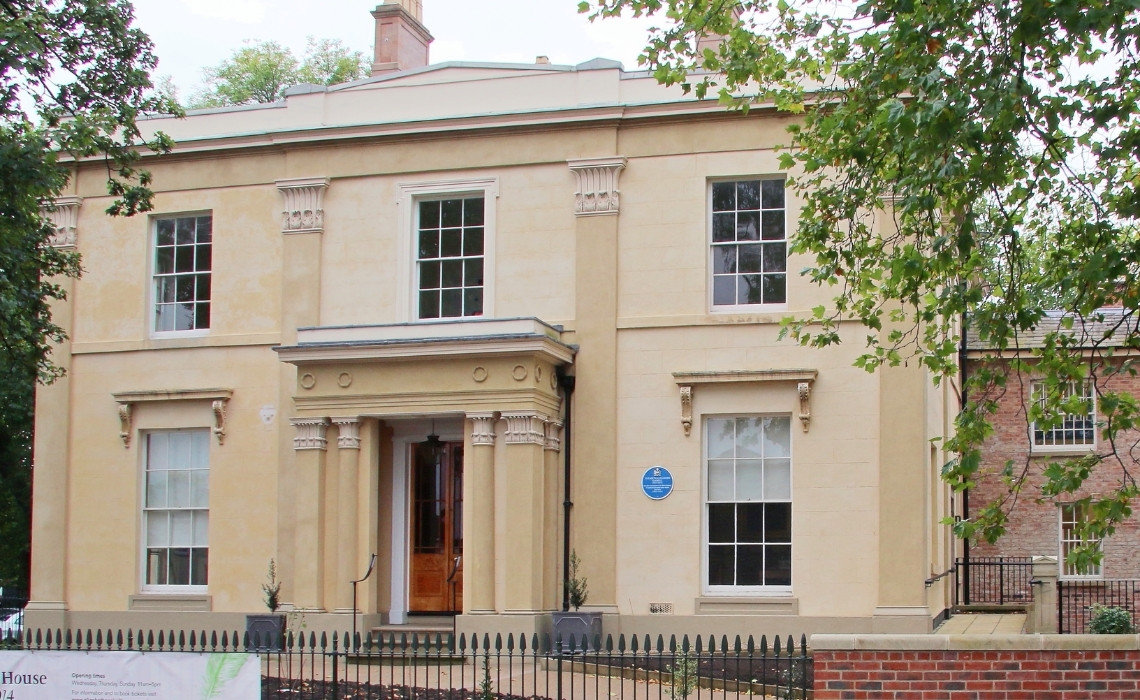
Why visit?
This is more than a writer’s home — it’s a window into Victorian domestic life, social history, and literary connections (Gaskell knew Dickens, Charlotte Brontë, and others). The house restoration is beautifully done, and the garden is a peaceful enabler to reflect. See more pictures.
Accessibility highlights:
Step-free access throughout (via a side ramp) to allow wheelchair users to bypass the front steps. Lift access to all floors (basement, ground, first). Doors and circulation allow wheelchair maneuvering (e.g. ~150 × 150 cm turning space in many rooms). Accessible toilets on both ground and first floors. Blue Badge holders can reserve limited parking on site. The venue is surveyed by AccessAble, offering a detailed access guide online. Assistance dogs are welcome. In short: it’s rare to find a heritage house with nearly full step-free coverage, and it offers a tranquil, historically rich visit.
Victoria Baths
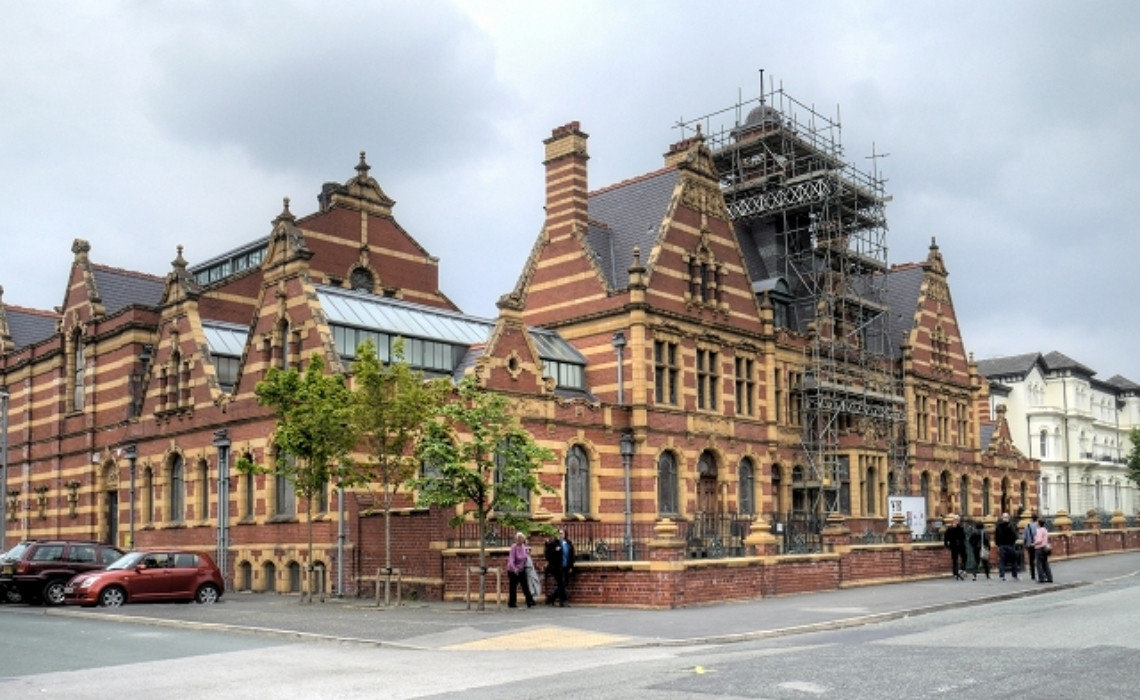
Why visit?
Once a grand municipal bathing complex built in the early 20th century, the Baths now serve as a heritage and community hub. With its ornate tiling, stained glass, and ambitious architecture, it’s often dubbed “the Water Palace” of Manchester. It’s a place where industrial and civic pride meet beauty. See more details.
Accessibility highlights:
While full accessibility detail isn’t always present, the site has been developed for public access: ramped entrances, guided tours adapted for mobility needs, and a visitor centre with accessible features. Because restoration and partial reuse are ongoing, it’s wise to check ahead. I wasn’t able to find a detailed, up-to-date accessibility survey, so if you like, I can dig more deeply or reach out to the site’s access office so you get the latest info.
Stadium Tours: Etihad & Old Trafford
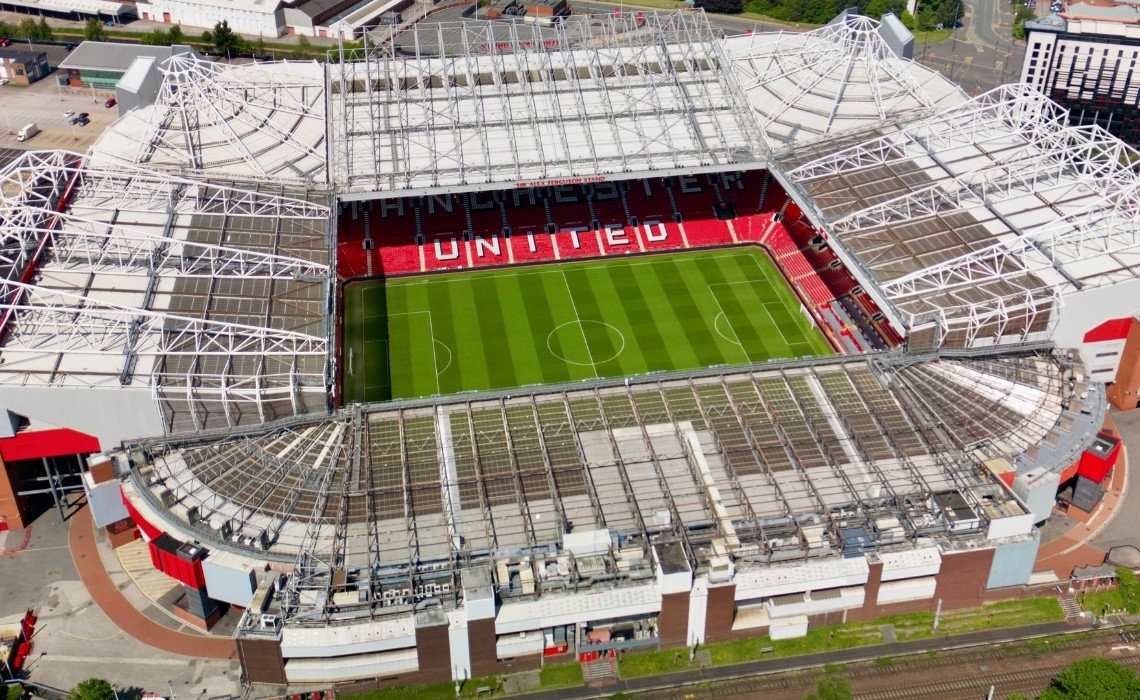
Why visit?
Stadiums are part of Manchester’s identity. Whether you’re a Manchester United or City fan (or just curious), these tours open the locker rooms, tunnel, pitchside, and behind-the-scenes spaces. They tell stories of fandom, local identity, and sporting culture. Look at tours.
Accessibility highlights:
Both stadiums have designated wheelchair seating, accessible lifts, and routes. Staff are trained to assist visitors with mobility needs. Tours include step-free segments, and routes are planned to include accessible views. Parking for disabled visitors is usually available nearby. Because each stadium’s features (which tour is accessible) can differ, it’s essential to check with their access team before booking.
Manchester Museum
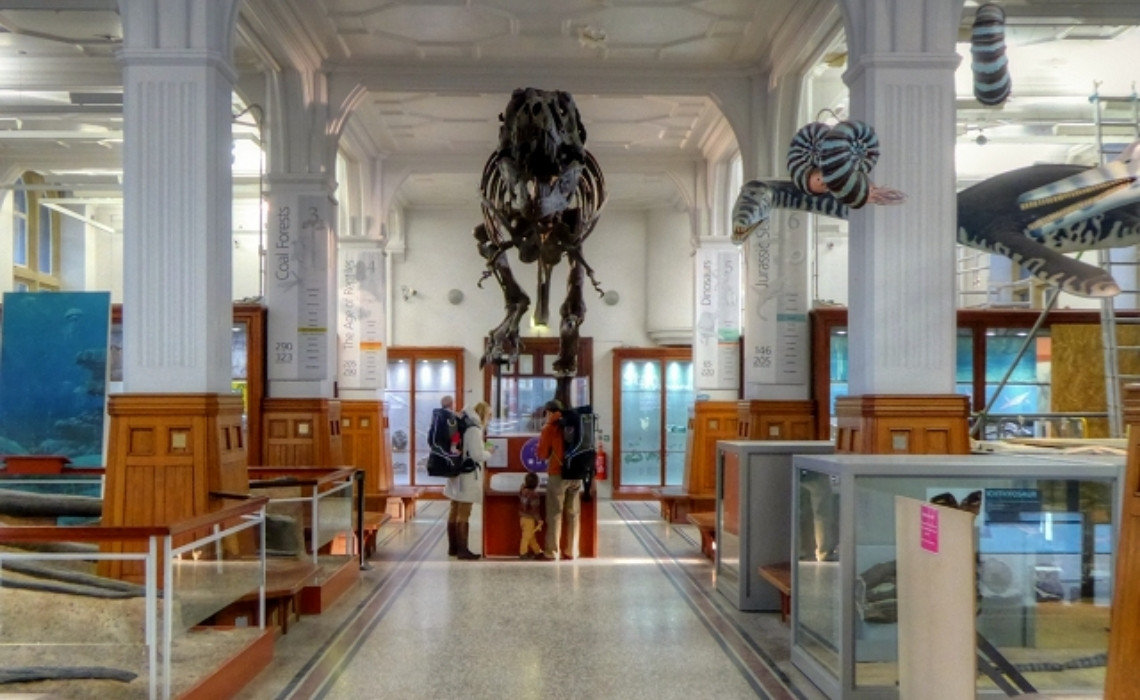
Why visit?
Part of the University of Manchester, this museum houses a wide-ranging collection: natural history, ancient Egypt, anthropology, dinosaurs, local archaeology, and more. It blends research with public engagement, and recently it has made significant strides in accessibility. Check out the tours.
Accessibility highlights:
Ramped entrance and level access to all public zones (galleries, shop, café, toilets). Lifts serving all floors. Wheelchairs and walking aids available for loan. Quiet room (on the first floor, near the Egyptians & Sudan gallery) for sensory respite. Changing Places toilet on the ground floor next to the Main Hall. Hearing loop at reception desk. Signage and interpretation comply with RNIB / visual accessibility standards. Several accessible parking options near the museum and advice for drop-off. This combination of museum scale + access layers makes it one of your safer bets for a full day’s visit.
(Bonus) Mayfield Park & Alexandra Park
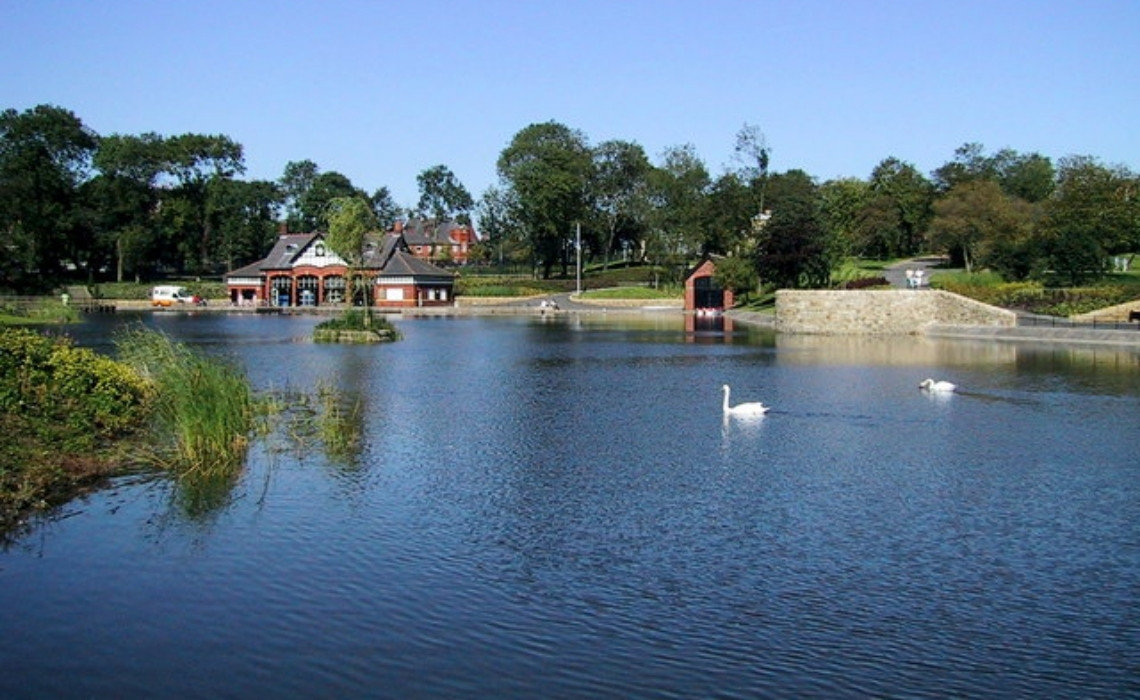
Why visit?
These parks offer a green counterpoint to Manchester’s hard lines. Mayfield is a newer park built on formerly under-used rail and industrial land; it feels modern, with wide paths and thoughtful amenities. Alexandra is older, more mature, with established tree cover, ponds, and a gentler pace.
Accessibility highlights:
Many paths are paved or surfaced to accommodate wheelchairs. Accessible toilets and resting points are located in the new park developments. The layout is relatively level, avoiding overly steep gradients. As always, it’s good to check current site maps or park authority pages for any closures or path works.
Accessible Places to Stay in Manchester
The Lowry Hotel (Luxury)
Why stay here?
This five-star riverside hotel is one of Manchester’s most iconic stays. Sleek, modern, and quietly elegant, it overlooks the River Irwell and is within walking or rolling distance of Spinningfields, Deansgate, and the city’s major cultural venues. Inside, you’ll find high-end touches without unnecessary fuss — it’s stylish yet approachable. Book a room.
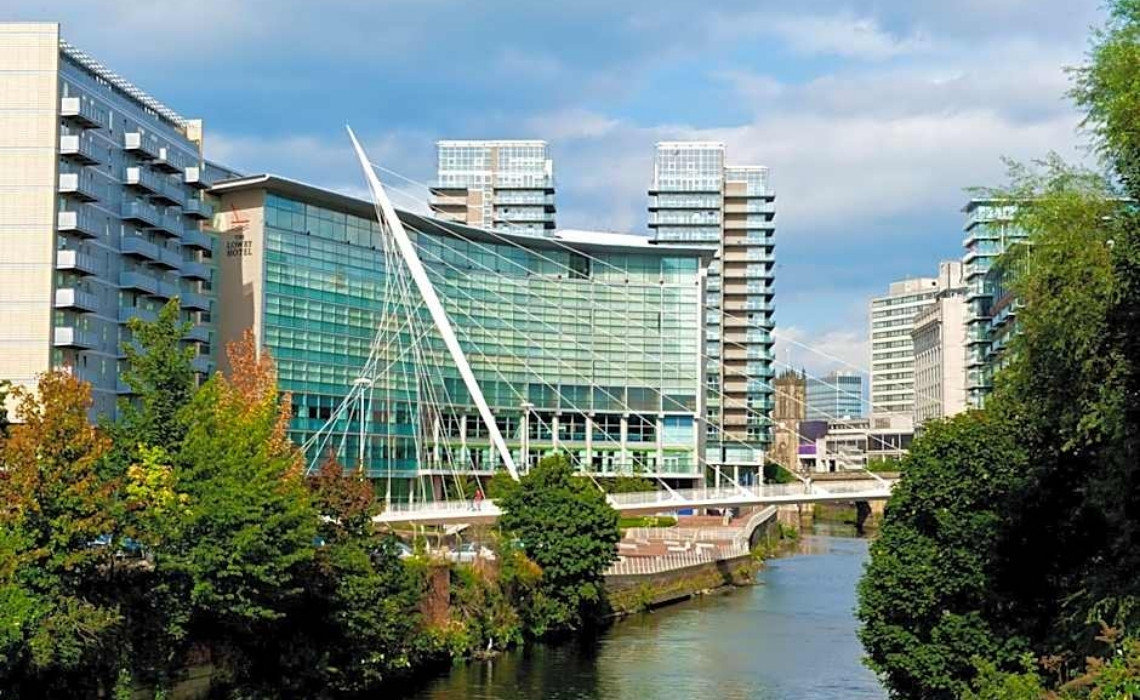
Accessibility highlights:
Step-free entrance with automatic doors. Spacious reception area and wide corridors throughout. Elevators large enough for power wheelchairs. Accessible rooms with generous turning space, lowered amenities, and roll-in showers equipped with grab rails. The restaurant, bar, and riverside terrace are all on one level. Accessible parking available at the hotel. Staff are trained in disability awareness and happy to assist with luggage or navigation.
Clayton Hotel Manchester City Centre (Mid-Range)
Why stay here?
Located near Portland Street and Piccadilly Gardens, the Clayton Hotel combines convenience with comfort. It’s modern, clean, and dependable — ideal for travellers wanting accessibility in the city centre without luxury prices. The in-house restaurant and bar make it easy to relax after a day exploring. Look at rooms.
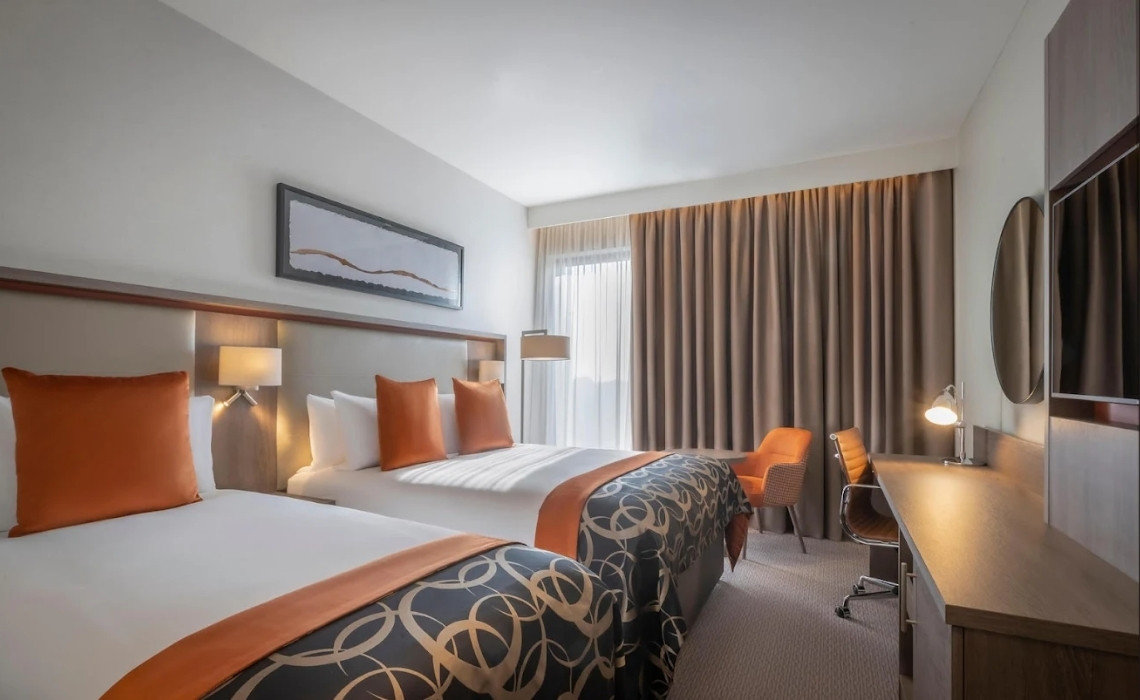
Accessibility highlights:
Automatic entrance doors and level lobby. Lifts to all floors, with visual and tactile indicators. Accessible guest rooms with roll-in showers, grab rails, lowered beds, and space for side transfer. The public restaurant, bar, and lounge are all step-free. Staff are attentive and can provide portable hearing loops and additional assistance when required.
Premier Inn Manchester Central (Budget)
Why stay here?
Reliable, affordable, and located close to Deansgate and the Manchester Central Convention Complex, this Premier Inn is perfect for visitors wanting simplicity, good sleep, and proven accessibility standards. See more.
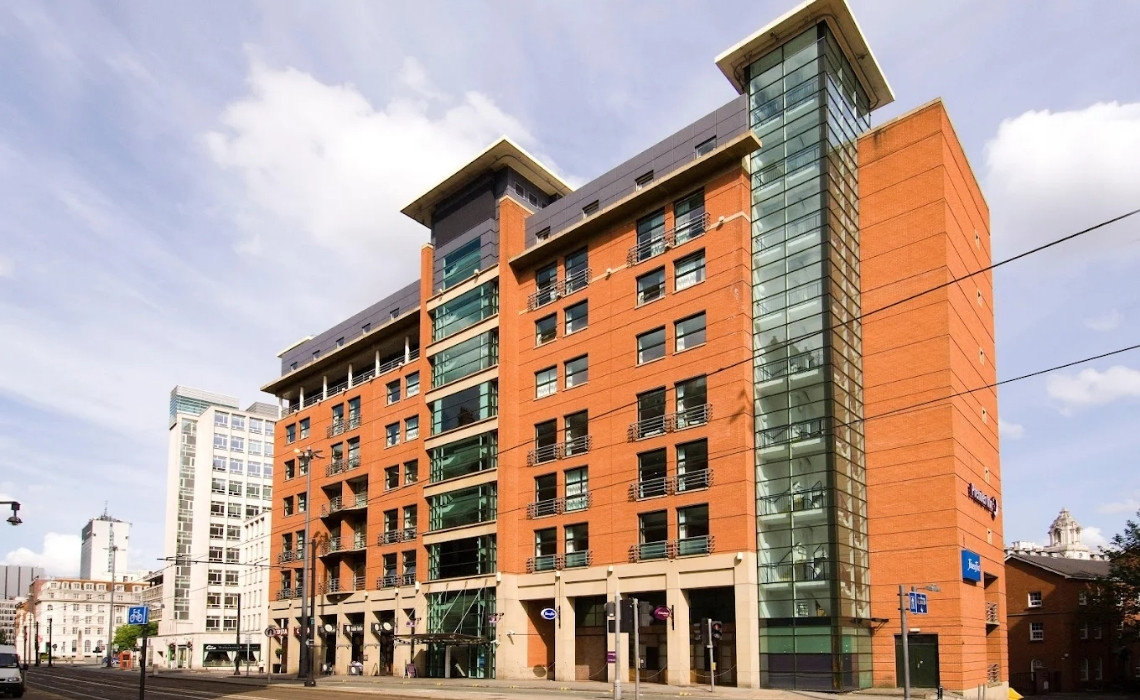
Accessibility highlights:
Step-free entrance and wide corridors. Lifts to all floors. Accessible bedrooms with ensuite wet-rooms, adjustable showerheads, non-slip flooring, and emergency pull cords. Accessible restaurant area with movable seating. Blue Badge parking bays nearby and staff available 24/7 for assistance.
YHA Manchester (Hostel Option)
Why stay here?
Situated along the canal in Castlefield, YHA Manchester offers a relaxed, community-driven vibe. It’s ideal for solo travellers, groups, or families wanting budget-friendly accommodation with inclusive design principles. Get a deal.
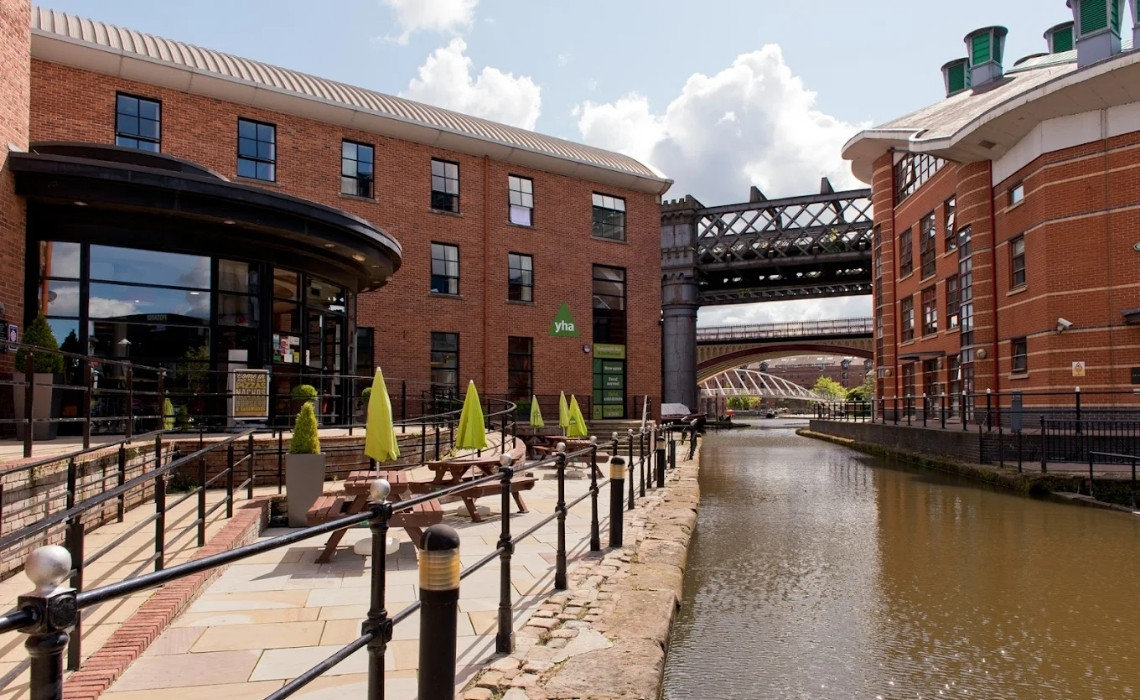
Accessibility highlights:
Step-free entrance and reception area. Lift to all floors. Designated accessible bedrooms with ensuite bathrooms and roll-in showers. Ground-floor lounge, dining area, and bar all on one level. Wheelchair access to the canalside terrace. The hostel provides accessible parking spaces and welcomes assistance dogs.
Accessible Restaurants in Manchester
The Alchemist – New York Street (Luxury)
Why eat here?
Known for its creative cocktails and theatrical presentation, The Alchemist is an experience as much as a meal. The atmosphere is lively but refined, and the menu balances classic favourites with imaginative twists. Learn more.

Accessibility highlights:
Step-free entrance and interior layout. Lift access to all seating areas. Accessible restrooms. Spacious tables with flexible seating for wheelchair users. Staff are well trained in accommodating dietary and physical access needs.
BrewDog Manchester (Mid-Range)
Why eat here?
BrewDog has become a little commercialised of late, but still offers craft beers, burgers, and a laid-back vibe in a warehouse-style setting. It’s casual, friendly, and fully committed to inclusivity. See opening hours.
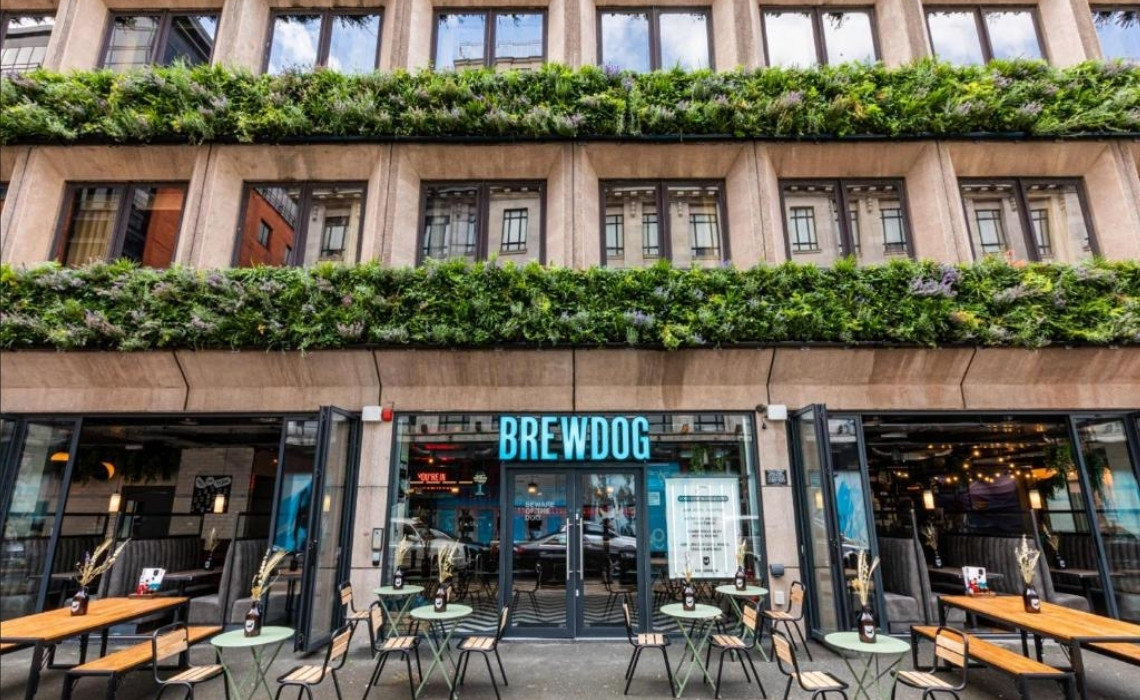
Accessibility highlights:
Step-free entrance with wide double doors. Ground-floor layout with ample room between tables. Accessible restroom facilities. Clear signage and good lighting. Service staff are approachable and accustomed to assisting guests with mobility needs.
Accessible Transportation in Manchester
Getting around Manchester is relatively straightforward thanks to the city’s accessible public transport infrastructure and clear information from Transport for Greater Manchester (TfGM).
Transport for Greater Manchester (TfGM) Accessibility Hub
An essential online resource offering detailed guidance for all transport modes, accessibility maps, and travel support services across Greater Manchester. Explore accessibility information.
Metrolink Tram Network
Every stop is step-free with level boarding onto trams. Priority spaces for wheelchair users are available on all services, along with visual and audio stop announcements. Staff can assist if requested in advance, and lifts at stations have tactile buttons and audio cues.
Bus Network
Most Manchester buses are low-floor and equipped with ramps, priority seating, and wheelchair spaces. Drivers receive disability awareness training. Bus stops in central areas feature tactile paving and clear signage.
Train Travel
Both Manchester Piccadilly and Manchester Victoria stations offer step-free access to all platforms, accessible ticket counters, and assistance services via the Passenger Assistance scheme. Accessible toilets and Changing Places facilities are available at major stations.
Taxis and Ride Services
Wheelchair-accessible black cabs operate across the city and can be hailed or booked in advance. Private hire companies such as Manchester Cars and StreetCars provide accessible vehicles on request.
Manchester Airport
Each terminal has step-free routes, accessible restrooms, and trained assistance staff. Passengers can pre-book special assistance and use dedicated mobility help points throughout the airport. Detailed accessibility guides for Terminals 1, 2, and 3 are available via the airport’s website.
Rounding things up!
Manchester has long been a city of reinvention — from mills to music, football to fashion. What’s remarkable today is how that same creative spirit extends to accessibility. The city’s compact centre, inclusive museums, lively cafés, and expanding transport network make exploring genuinely enjoyable. Whether you’re following in the footsteps of industrial pioneers, rolling through a park reborn from railway lines, or sipping coffee by the canal, Manchester welcomes you at your own pace — and on your own terms.


Responses